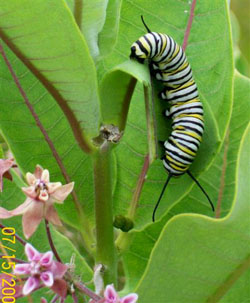Welcome to our ongoing effort to catalog citizen science and other public participation in scientific research (PPSR) projects for UC California Naturalists and other citizen scientists. We invite you to browse the listed projects or enter key words (like birds, youth, invasive, coast, Alameda, etc.) in the search box above to find projects in your area. It's a great way to stay involved and keep developing your skills as a natural scientist!
A vast majority of the information in the database was gathered from project websites and may be out of date. We encourage you to contact projects directly to get involved and learn about most recent opportunities. If you work with a listed project and would like to add to, update, or correct the information we have, please email cghdixon@ucdavis.edu. Also, please consider filling out the "PPSR perspectives" survey. Click here to access the survey, which will help guide this project in the coming year.
If you know of a project not on our list, please go to the "tell us about a project" link on the left so we can list the project here. Thanks for your help!
Special thanks goes to the National Science Foundation Informal Science Education program and the Stephen J. Bechtel, Jr. Foundation for supporting this database of projects.
Monarch Larva Monitoring Project
-
Organization NameUniversity of Minnesota
-
Project Website
-
Organization Website
-
PartnersN / A
-
Contact NameKaren Oberhauser
-
Contact Emailoberh001@umn.edu
-
Contact PhoneN / A
-
Other Contact Information
Department of Fisheries, Wildlife and Conservation Biology
1980 Folwell Ave, 200 Hodson Hall
St Paul, MN 55108 -
Project Purpose (taken from project materials)
The overarching goal of the project is to better understand how and why monarch populations vary in time and space, with a focus on monarch distribution and abundance during the breeding season in North America.
-
Participant Activities
There are two ways to participate in the Monarch Larva Monitoring Project:
Commit to monitor regularly - If you have access to a site in which milkweed grows and that you can monitor regularly, we encourage you to monitor this site on a weekly basis during the time that milkweed is present. You will register as a Monarch Larva Monitoring Project volunteer, and provide detailed information about your site.
Submit anecdotal observations - If you don't have the time or an available site to monitor regularly, we would still like to know about any observations of monarch eggs or larvae that you make. This method of participation is also for regular volunteers who may observe monarchs at locations other than their regular monitoring site.
-
Data Entry
-
Website
-
Data Sheets
-
-
Other Participant ActivitiesN / A
-
System Studied
-
Invertebrates
-
-
Geographic ScopeNational
-
RegionAll (see 'geographic scope')
-
LocationWhere ever Milkweed can be found.
-
Location - MapDepartment of Fisheries, Wildlife and Conservation Biology 1980 Folwell Ave, 200 Hodson Hall St Paul, MN 55108
-
Time Commitment
-
Other (see Other Information below)
-
-
Volunteer Qualifications
Supplies Needed
- Data sheets and Field Notebook: You will need at least one copy of each datasheet, and possibly more depending on the number of weeks you monitor. A field notebook (journal type or spiral-bound) is also useful for recording other observations that don’t fit on the data sheets.
- Hand lens: A hand lens or magnifying glass is very useful for identifying eggs and small larvae.
- Meter stick or measuring tape (for measuring milkweed density): You will need a meter stick only once during the season.
- Rain gauge (for Activity #2): If you can, mount an inexpensive rain gauge at your site. Try to find one that is designed to prevent the water from evaporating.
- Thermometer (optional): Mount an inexpensive outdoor thermometer at your site, or bring one when you visit the site to monitor each week.
- Field guides (optional): To identify monarch eggs and instars, use A Field Guide to Monarch Caterpillars or our condensed version, the Larval Field Guide, on this website. A guide to wildflowers is useful for identifying the blooming plants at your site.
- Containers for rearing larvae (for Activity #3): See Instructions for Rearing Larvae for more information.
-
Volunteer Training
There are training sessions available for teachers. For more information go to this website. http://www.monarchlab.org/mitc/resources/CoursesAndWorkshops.aspx
-
Cost to ParticipantN / A
-
How will the findings be used?
The overarching goal of the project is to better understand how and why monarch populations vary in time and space, with a focus on monarch distribution and abundance during the breeding season in North America.
-
Other InformationN / A
-
Photo

-
last update:N / A
If you work with this project and would like to add to or update the information below, please email cghdixon@ucdavis.edu.
If you know of a project not on our list, please go to the "tell us about a project" link on the left so we can list the project here. Thanks for your help!
This database is focused on projects in California focused on the environment. For opportunities outside California, as well as national projects that don't have a California-specific components, check http://www.birds.cornell.edu/citscitoolkit/projects.

